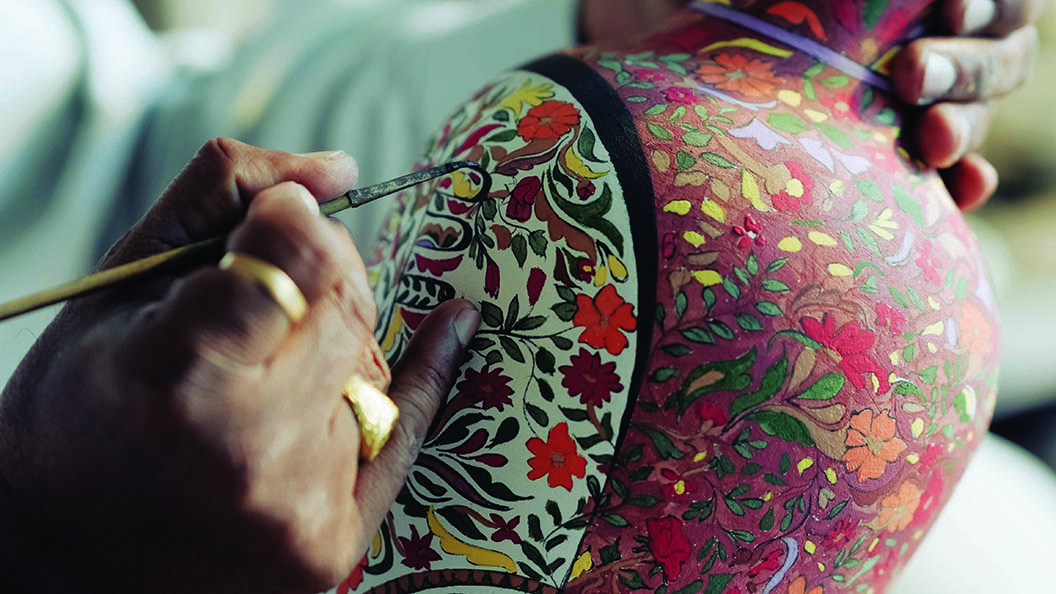THE CRAFT
Blue Pottery

From the state of Rajasthan

Jaipur, Rajasthan
Blue pottery, known for its low-temperature glazing and blue hues from cobalt oxide, originated in Turkey and Persia. Now, Jaipur's pottery art includes many motifs from this craft's original style.

Heritage Value
To create these exquisite artefacts, artists use a mix of various traditional ingredients. These include quartz stone powder, multani mitti (Fuller’s earth), powdered glass, borax, gum and water.
Jaipur artists use both the potter's wheel and molding techniques, using plaster of Paris molds, to produce their craft. The artifacts are then glazed at a low temperature.
Originally, artists crafted surahis (narrow-necked jars) and cylindrical jars using this art form. Now, modern designs include a wide range of items such as vases, ashtrays, plates, tiles, jugs, mugs, and more. This captivating art form mixes aesthetics with utility, as each artefact is crack-resistant and suitable for daily use. Blue pottery got certified with the Geographical Indication (GI) tag in 2015.
Jaipur artists use both the potter's wheel and molding techniques, using plaster of Paris molds, to produce their craft. The artifacts are then glazed at a low temperature.
Originally, artists crafted surahis (narrow-necked jars) and cylindrical jars using this art form. Now, modern designs include a wide range of items such as vases, ashtrays, plates, tiles, jugs, mugs, and more. This captivating art form mixes aesthetics with utility, as each artefact is crack-resistant and suitable for daily use. Blue pottery got certified with the Geographical Indication (GI) tag in 2015.

Memory Vault
Kripal Singh Shekhawat, fondly remembered as the father of blue pottery, helped revive this fading heritage craft. He breathed new life into the art form by introducing innovative shades like green, yellow, and brown into the creations. For his efforts, he received awards like the Padma Shri and the title of Shilp Guru. His illustrations feature in the original Constitution of India.
Disclaimer:
Any information on this page is anecdotal and based on publicly
available details. If you're interested in learning more,
click here.

